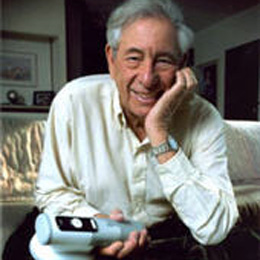Setting the Pace for Medical Innovation
Like many medical technology innovators, Dr. Robert Fischell identified a patient need—longer-lasting batteries for pacemakers—and then worked to develop the product to meet it. In the early 1970s, Dr. Fischell sought to produce a better pacemaker that would spare patients the necessity of undergoing surgery every two years to ensure that their device had enough battery power to function.
Trained as a physicist, he used materials accessed through his job at The Johns Hopkins University Applied Physics Laboratory to create a hermetically sealed, rechargeable pacemaker with a nickel cadmium battery that did not require additional surgeries. Dr. Fischell took his invention to the University’s surgical staff; their collaboration produced a battery that was strong enough to last longer than existing options but also small enough to fit easily in a pacemaker. After testing the prototype, the team approached a medical device company with precise ideas on the specifications for the new pacemaker. The manufacturer began producing and marketing the hermetically sealed pacemaker in 1975. Since then, additional improvements have been made to pacemakers, resulting in batteries with a 10-year lifespan and the devices that collect and transmit patient data.
Patients have benefitted from improved health outcomes and fewer surgeries. Dr. Fischell’s quest to improve patient lives and outcomes didn’t stop with his groundbreaking work on the pacemaker. He continued his career as a medical innovator, breaking new ground with inventions such as the first implantable insulin pump and collaborating on an implantable microcomputer that senses precursors of epileptic seizures and prevents them from occurring. Since that initial attempt to build a better pacemaker, Dr. Fischell has continued to set the pace for medical technology innovation.
